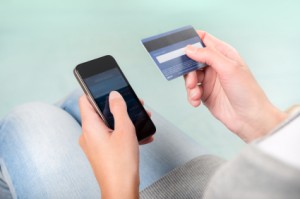By Melody Lashmar - Data, Analytics, Cross Platform Validations, Mobile. These disparate areas are all converging in the effort to thwart fraudsters and the transactions which they initiate.
It wasn’t that long ago that banks were completely segmented in their operations, management and platforms that were responsible for performing the various functions of the bank. As recently as 9 years ago, I could not log into my USA bank’s website and see my checking, savings and credit card accounts with the same login and in the same interface.
Today, not only can I see all my accounts at a given bank together, I have the opportunity to use services that will consolidate all my payment instruments, all my bank accounts and all my financial products all in one place. I can even do all this from the convenience of my mobile phone.
Consumer convenience certainly played a part in this convergence but, also, so did the necessity to manage the fraud that accompanied business in a global marketplace. Fraudsters are well organized and are continually finding new and better ways to extract millions of dollars out of the accounts of the unsuspecting and the unprepared. As a result, banks and payment processors have been busy closing the holes that allow for this type of movement of money to be caught early, limiting or eliminating any future losses such as we have seen in the recent past.
Banks are investing in systems and people to monitor activity at the consumer level. The questions they are answering are 1) Is this transaction within the realm of normal consumer behavior for this consumer? 2) Is this transaction possible given the location and timing of the last transaction? 3) Has any other unusual activity occurred on this consumer’s accounts at the bank that would make this transaction suspicious? Based on any of these questions resulting in a possible affirmative response, consumers can expect more calls from their Financial Institutions confirming their actions, more blocked transactions, and more suspended accounts awaiting confirmation.
Other innovative initiatives that will mitigate the investigative energies required and “fat-fingering” errors is the adoption of the QR code when it comes to payments. Efforts are underway to leverage the QR code to make creating a payment to a particular merchant painless with the correct information being located within the QR code to prepopulate the data elements. This initiative is not only being pursued here in the USA but there is a race between the USA and Australia to have the first live transaction using the QR code.
One last item of interest that seems to be on the drawing board is the ability for your Financial Institution to know, simultaneously, the location of your mobile device and from where the transaction is originating so that they can confirm with some certainty that you are the one making the transaction. That is to say that while you are checking out at Home Depot, when the transaction hits your FI, they will be able to check the geolocation of your mobile phone and compare that to the location where the transaction is being performed to confirm you are likely the one using your card.
One thing is clear, the banks and regulators are serious about reducing fraud and protecting their consumers. We will continue to see improvements in validation and verification methods being implemented which will reduce fraud for both the consumer and the merchant.



